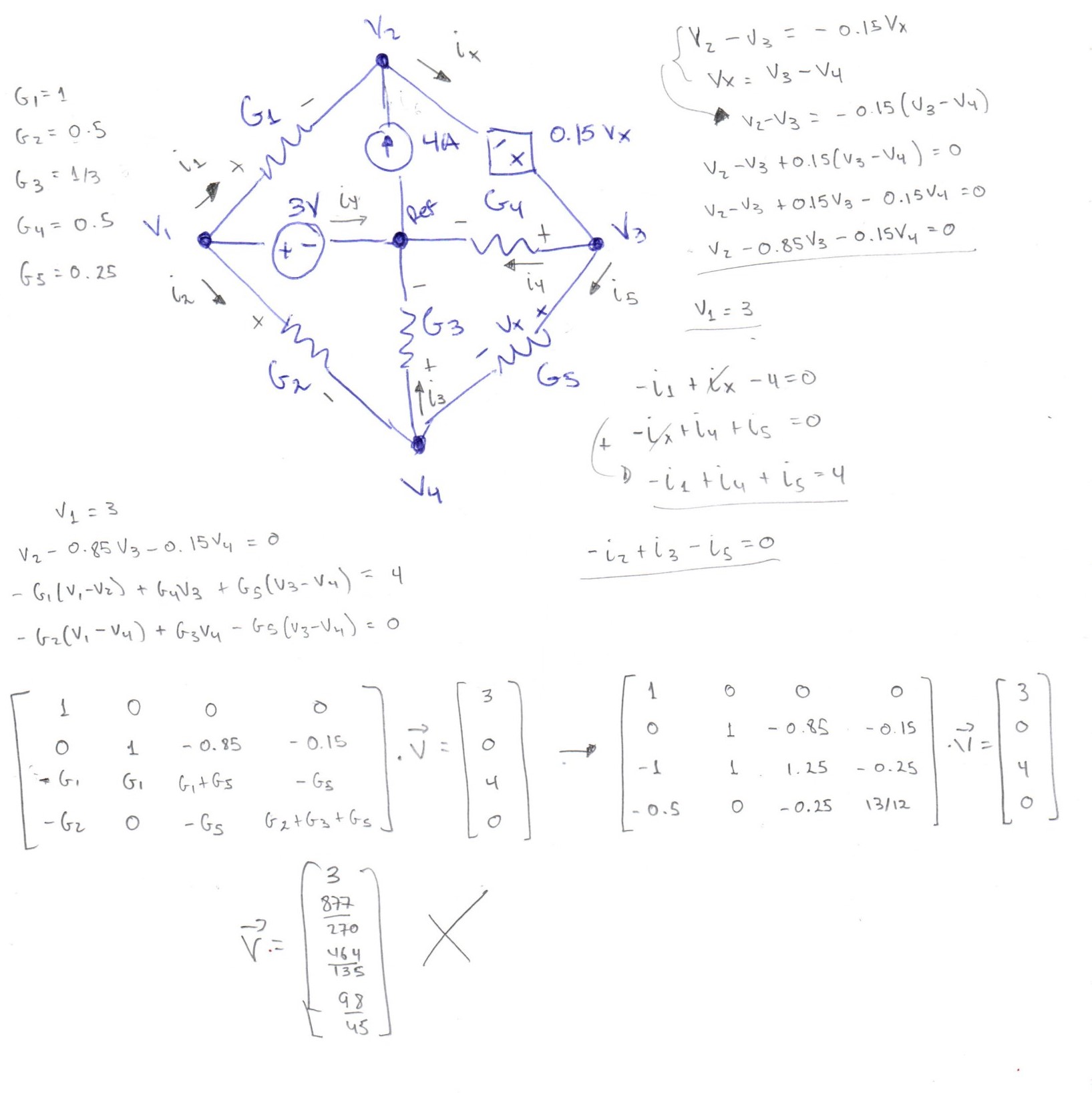This is a practice question from book: Engineering circuit analysis / William H. Hayt, Jr., Jack E. Kemmerly, Steven M. Durbin. — 8th ed. (pag. 91) .
Determine the nodal voltages in the circuit:
Ans: v1 = 3 V, v2 = −2.33 V, v3 = −1.91 V, v4 = 0.945 V.
And this is one of my attempts (The central node is the reference node): When I solve the matrix (I do it through software so that's not the problem) the answers for voltages are not the right ones. And I don't know what I'm doing wrong (Maybe I'm not stating the equations correctly).


